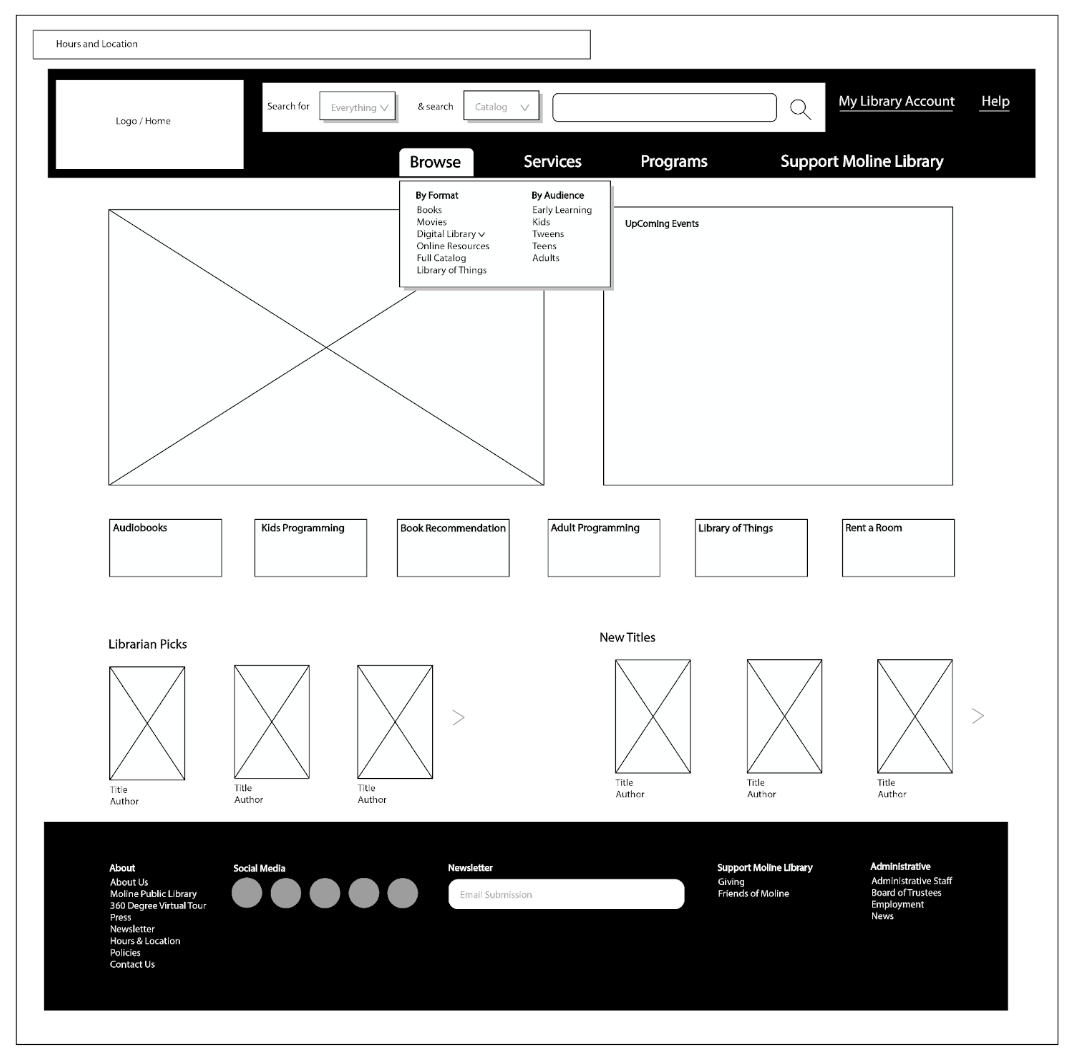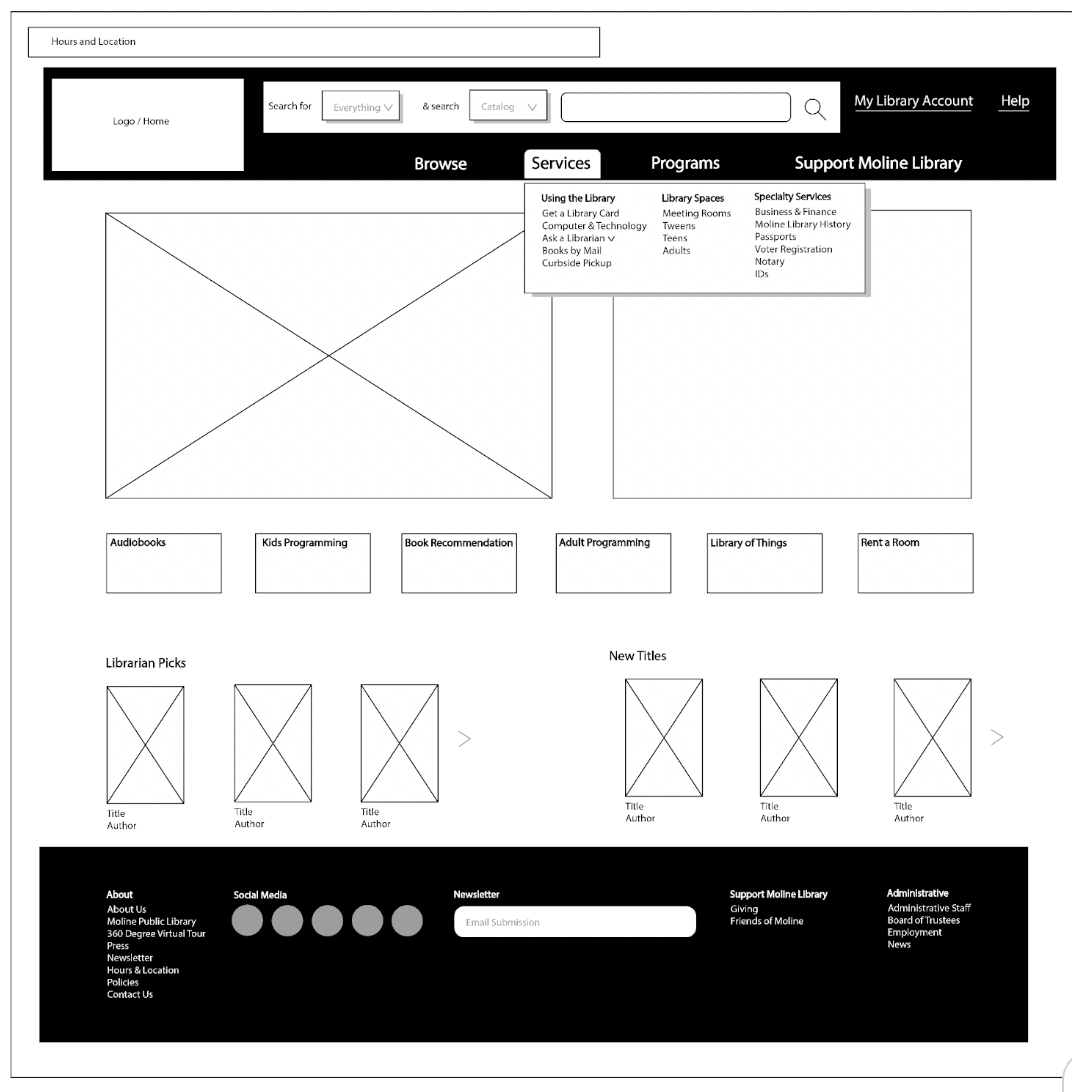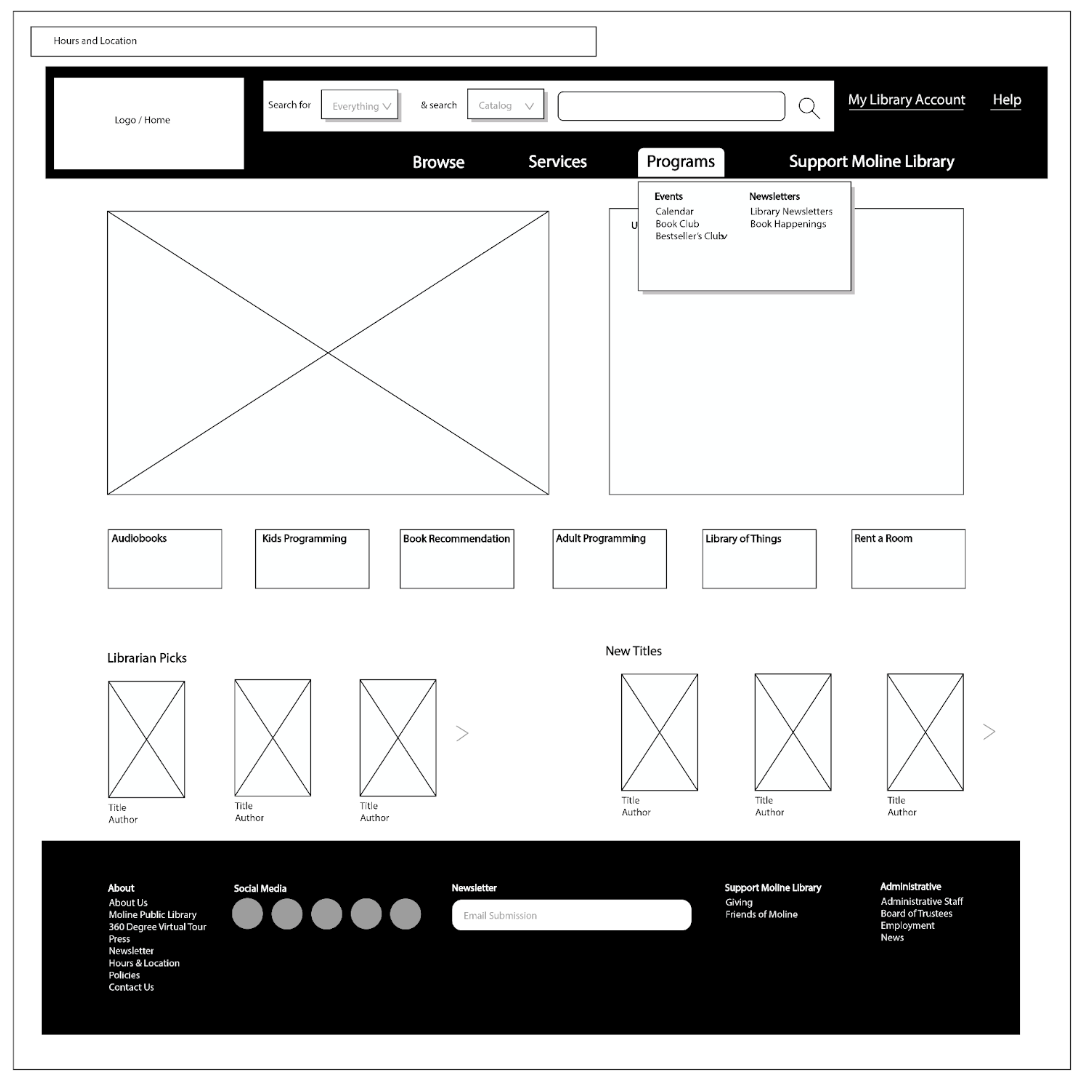Moline Public Library
A library that prioritizes the needs of its community and patrons.
Overview
Role: UX Research
Company: Moline Public Library is a library in Moline, IL that has been it’s city’s central hub of information and community resources for 150 years.
Time Frame: 6 weeks exploratory research
Method: remote interviews, literature research
How can we improve user experience across the website?
Moline Public Library’s website compiles a seemingly overwhelming amount of information from media offerings to community rental spaces and homework help.
Users often struggle to find what they are looking for and are not even aware of some of the programs offered for free at their library.
How can we redesign Moline Public Library’s website in order to ensure its patrons are truly the priority?
How might we solve the problem?
The process used to find a solution:
Identify an intuitive solution for an organization scheme
Develop an internal search system to encourage patron discovery
Accessibility in regard to community resources
Project Proposal
Timeline
kickoff
Competitive Analysis
Literature Review
secondary research
primary research
Expert Interviews
User Interviews
User Personas
Product Goals
Product Features
concept development
Sitemap
User Flow
Sketches
Wireframes
ideate
Usability Testing
Affinity Mapping
test
New Features
Responsive Design
Final Designs
Final Prototype
deliver
Takeaways
reflect
Understanding the Community
Secondary Research
In order to better understand the needs of the Moline, IL community and how the library can better serve them, I gathered quantitative data on city demographics and social service needs that could be filled by the library.
I used https://www.moline.il.us/
9th most populated city in Illinois
School district is a leading industry
Educates 7,500 students across 12 elementary schools, two middle schools, one highschool.
Two community colleges
11.7% of Moline families live in poverty
The median age of residents is 38.6 years old.
Decoding the Library’s Purpose, Needs, & Challenges
Three Library professionals were interviewed in order to better understand the importance of local libraries in their communities from an insider’s perspective.
Primary Research
frequently, users need
library hours
children’s programming
keep track of digital media
sometimes, users need
books on hold
access to adult education opportunities
occasionally, users need
room reservations
new hobbies to try
Empathizing with the Library Patron
To depict my research, I developed three user personas.
Personas
Ideate
Before designing, I conducted a content inventory to better understand the current website for Moline Public Library.
Once complete, I created a sitemap.
Visualize the website’s structure.
Testing
Assessments to labeling and taxonomy were made using Treejack to better understand user’s understanding of the new site structure.
Tests were conducted on the sitemap.
Wireframes
Low fidelity wireframes were created
Test results yielded a final iteration of the sitemap and wireframes were created.
Take Aways
Time for More Research
I would be interested to interview Moline, IL residents on this project and see if their needs were being met.
I would like to conduct future iterative Tree Testing to confirm findability across the website.
Once the project progressed beyond wireframes, I would have conducted Eye-Tracking to test hypothesis regarding where the user’s eyes fall first and which sections they skipped entirely.
With more time I could have engaged users in A/B Testing against variations of the Sitemap, Wireframes, or the site.
Personal Take Aways
Weighing the needs for users against the desire for aesthetics, users should always win out. There are many positive aspects to the Moline Public Library site, however some decisions were making it challenging for users to find what they needed or understand shift changes in the page views.
Having a deep understanding of user needs is paramount to creating a successful web environment where users feel supported in their search for more knowledge. Putting the users first, taking information from the librarian interviews, and using the cities own demographic information was key to understanding which parts of the site the users would prioritize.
The site would only become better with more time and more feedback.











